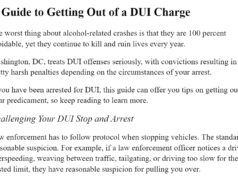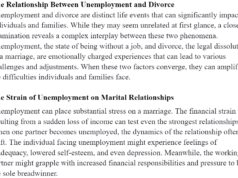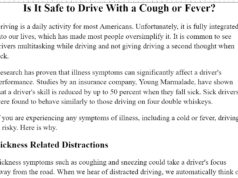SPONSORED CONTENT
Driving under the influence of alcohol is a major problem in all states. According to the NHTSA, an average of 28 people die daily due to drunk driving.
Almost every person has felt the impact of drunk driving at some point. Whether it is getting in an accident while driving intoxicated, riding with an intoxicated driver, or worse, getting hit by a drunk driver. You will also likely know someone with at least one arrest for drunk driving.
A Legal Limit Does Not Mean Safe
The legal alcohol limit across many states is 0.08 percent BAC. It takes between two to four servings of beer for an average person to reach a 0.08 percent BAC, with variations depending on body size and gender. The larger a person’s body is, the more beer servings it takes for them to reach the legal limit.
A blood alcohol limit of under 0.08 BAC is allowable on the road. But, it does not mean it is safe. According to the NHTSA, alcohol impairments begin with the first drink. If you choose to operate a vehicle after the first drink, your chances of getting in an accident will be slightly higher than if you hadn’t taken any drinks.
In 2018, 1,878 people died in accidents where the driver had an alcohol limit of under 0.08 percent. In 2018, Utah lowered its BAC limit to 0.05 percent, which resulted in a drastic drop in car accident fatalities in the following year. According to NHTSA data, Utah recorded an 18.3 percent drop in road fatalities in 2019, a good indicator that impaired driving could be causing huge losses of life even when the drivers are under the legal limit.
Support For Zero Tolerance Policy
“Take the proper precautions and have a designated driver or use a ride-sharing platform if you are going to be drinking,” says car accident lawyer Douglas Leifert.
The study conducted by DesertHopeTreatment.com also involved a national poll that showed 33 percent support for a zero percent alcohol driving policy. Men have less support for the idea at 28 percent compared to their female counterparts at 40 percent. Most alarming was the finding that 33 percent of respondents didn’t know that 0.08 percent BAC is the legal limit. Despite 0.08 percent BAC being the standard in most states, nearly a third of the poll respondents were unaware. Many schools across the country try to lessen that percentage by informing children about the legal percentages of alcohol in their drug awareness and prevention curriculum.
Twenty-five percent admit they would drive a car in the morning after a night of heavy drinking. While how long the body takes to metabolize alcohol may be debatable and can vary from person to person, the morning after heavy drinking can have you feeling pretty beat up, and thus not a good time to get behind the wheel even when you could be below the legal limit.














![Monday News: Trump’s Lunacy Pushes China, Russia, India, etc. Together; “Happy Labor Day. Donald Trump and Elon Musk Are Screwing Workers.”; “Where is the [media’s] intense focus on Trump’s failing health?”; ““Trump says he is not a dictator. Isn’t he?”](https://bluevirginia.us/wp-content/uploads/2025/09/montage0901-100x75.jpg)